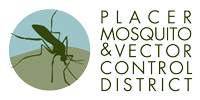ROSEVILLE, Calif., August 11, 2017 – The Placer Mosquito and Vector Control District reported today that a mosquito sample has tested positive for St. Louis encephalitis virus (SLEV). Laboratory staff detected the virus while performing routine testing of mosquito samples. The sample was collected from a site along Gladding Road on the northern end of western Placer County, in an area surrounded by pasturelands. This is the first detection of St. Louis encephalitis in mosquitoes in Placer County, and it comes on the heels of a detection in Yuba County earlier this week. While SLEV has been found historically in many regions of California, there have been no human cases of SLEV since 1970 in Placer County, and only four cases between 1945 and 1969. The reemergence of the virus in this area is a new phenomenon, and public health and vector control officials will be closely monitoring surveillance information.
SLEV is transmitted to humans by the bite of an infected mosquito just like West Nile virus (WNV). The two viruses also share a few other similarities. In northern California, the mosquito species that carry SLEV, Culex pipiens and Culex tarsalis, are the same mosquitoes that are able to transmit WNV. The viruses also share the same symptoms. According to the Centers for Disease Control and Prevention (CDC), most people infected will not become ill. Initial symptoms of those who become ill include fever, headache, nausea, vomiting, and tiredness from 5 to 15 days after being infected. Severe neuroinvasive disease (often involving encephalitis, an inflammation of the brain) occurs more commonly in older adults. In rare cases, long-term disability or death can result.
Fortunately, another similarity between the viruses is the work done to prevent their spread. “We would not have to change our strategy or employ new tools to control the St. Louis encephalitis virus” says Joel Buettner, District General Manager. “What we do for West Nile virus – from the surveillance methods and tools to the treatments we conduct – will help control St. Louis encephalitis virus as well.”
Due to this latest development, the District is planning to set additional traps and conduct intensive larval surveillance in the area. The Placer Mosquito and Vector Control District advises the public to implement the 3 Ds of protection:
- Drain or dump any standing water that may produce mosquitoes.
- Defend yourself and your home by using a CDC-recommended insect repellent and dressing protectively when outside, and making sure screens on doors and windows are in good condition.
- Contact the District for any additional help controlling mosquitoes around your home.
For a list of CDC-recommended repellents, please visit the District’s website or the Centers for Disease Control and Prevention: www.cdc.gov/westnile/faq/repellent.html. To see SLEV activity in CA see: http://www.westnile.ca.gov/web_reports.php?report=sle&option=print&year=2017






